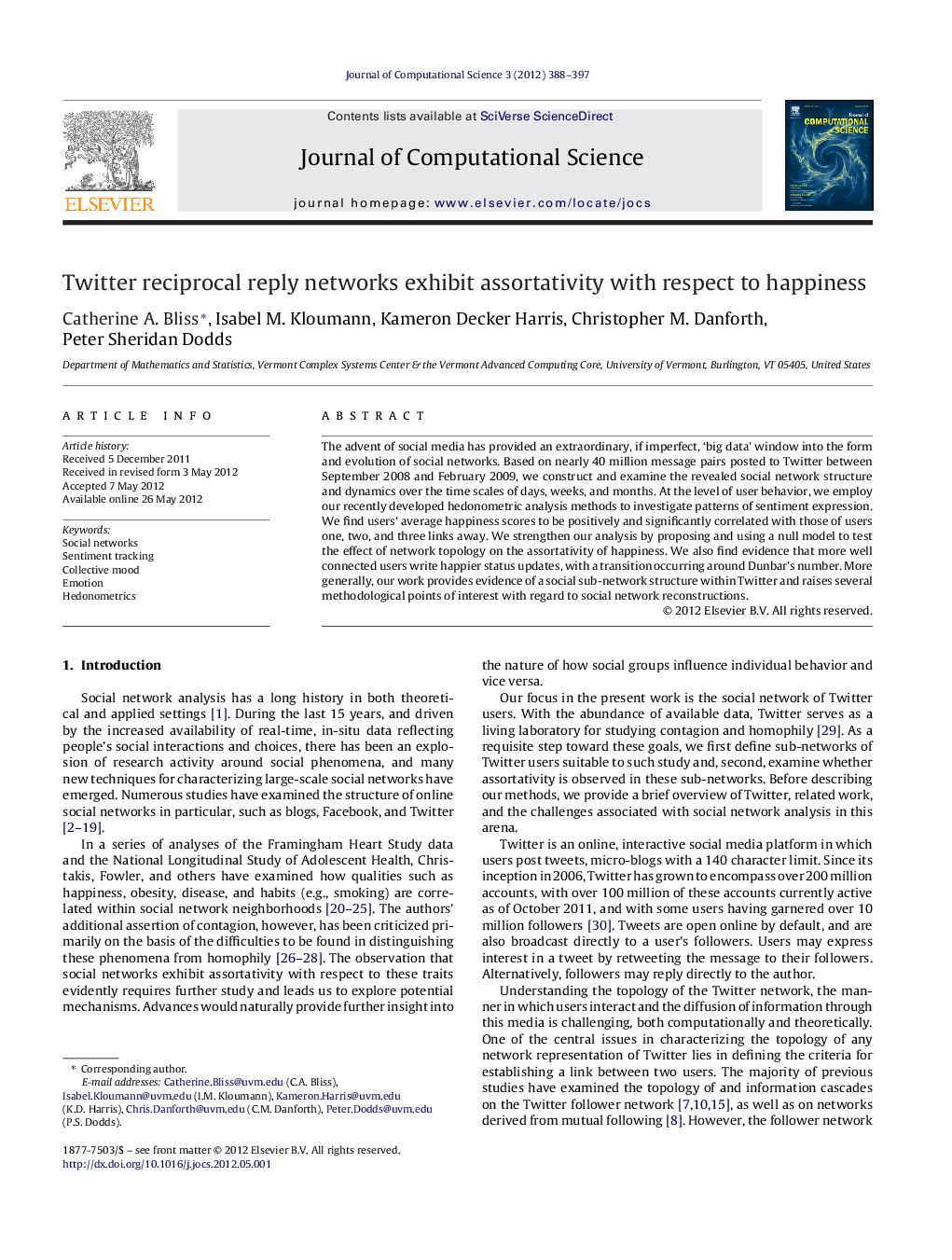| Article ID | Journal | Published Year | Pages | File Type |
|---|---|---|---|---|
| 429438 | Journal of Computational Science | 2012 | 10 Pages |
The advent of social media has provided an extraordinary, if imperfect, ‘big data’ window into the form and evolution of social networks. Based on nearly 40 million message pairs posted to Twitter between September 2008 and February 2009, we construct and examine the revealed social network structure and dynamics over the time scales of days, weeks, and months. At the level of user behavior, we employ our recently developed hedonometric analysis methods to investigate patterns of sentiment expression. We find users’ average happiness scores to be positively and significantly correlated with those of users one, two, and three links away. We strengthen our analysis by proposing and using a null model to test the effect of network topology on the assortativity of happiness. We also find evidence that more well connected users write happier status updates, with a transition occurring around Dunbar's number. More generally, our work provides evidence of a social sub-network structure within Twitter and raises several methodological points of interest with regard to social network reconstructions.
► We construct day, week and month networks from reciprocal replies of Twitter. ► Our dynamic view of this data reveals temporal changes in network structure. ► We employ a null model to test the effect of topology on happiness assortativity. ► Average happiness is assortative and this trend decreases with increased path length. ► Twitter has a social (sub)network, contrary to claims otherwise.
